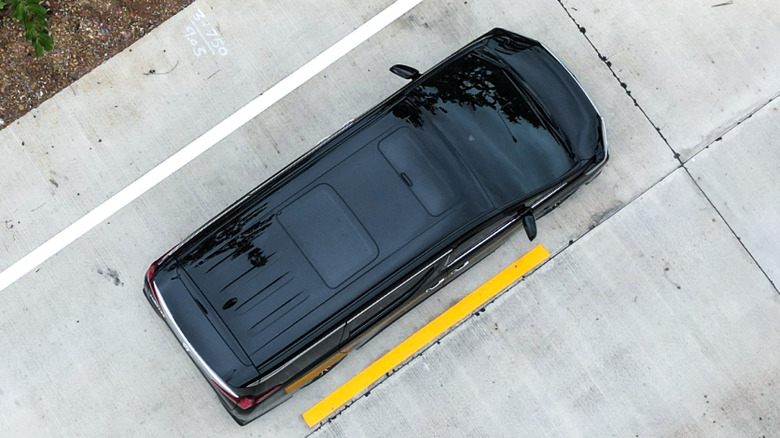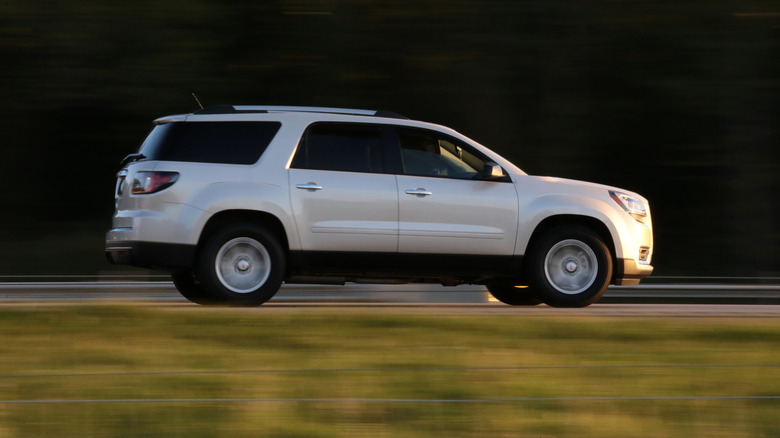What Are Those Ridges On The Roof Of An SUV For?
If you're researching SUVs, you're bound to run into confusing and possibly contradicting information. Some common thoughts about SUVs, such as being safer than a normal car, are not necessarily true. It can even be hard to tell the difference between an SUV and a crossover at times. As such, you might end up questioning more about an SUV's design and functions
For many, that questioning is directed at the ridges on an SUV's roof. The channels collect water, make the roof harder to clean and polish, and to some, they simply look bad. Owners have wondered if they could remove the ridges or level out the roof.
But these ridges, also called stiffening beads, offer several important benefits to SUVs that are important to the vehicle's aerodynamics and roof integrity. Without these roof ridges, SUVs would have worse fuel economy (especially on the highway) and be far more susceptible to damage.
Ridges make the roof stronger while hiding damage
The main purpose of an SUV's roof ridges is to help make the roof more durable. The extra space for storage on the roof is part of the vehicle's appeal, so many people will store luggage, outdoor gear, and whatever else they can fit on the roof.
However, an SUV's roof has a lot of surface space, and a large, flat piece of sheet metal will not be structurally sound. The stiffening beads make the roof more rigid, so it can handle more weight without dents or other deformations. In addition, if the roof does get dented or damaged, these ridges also make it less apparent. So, even if there are some frustrations with the ridges' aesthetics, they can keep your SUV looking better in the long run. Still, it's a good idea to take certain precautions to protect your roof from damage. However, there is an even more important reason for these roof ridges, and it has to do with an SUV's overall performance.
Ridges on an SUV's roof improve aerodynamics
An SUV is a big vehicle, and its roof has the largest surface area. As such, an SUV's roof will be one of the biggest factors to consider when aerodynamics comes into play.
If a car is not aerodynamic enough, it will have to deal with extra drag, which can tank fuel economy. With smaller cars, the surface area of the roof is not enough to seriously affect how wind moves around it, but this isn't the case with SUVs and other bigger vehicles. Smaller cars also have curved roofs to help with aerodynamics, but SUV roofs are flat so that luggage can be stored on top. This is where an SUV's stamped metal ridges come into play.
When the wind hits the roof's ridges, it redirects the wind's force, so less of the force is directly on and over the roof. Reducing drag and wind force is also important for allowing manufacturers to create roofs that are still thin but aren't at risk of being ripped off at high speeds.


